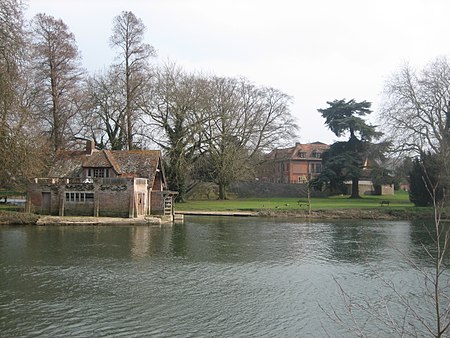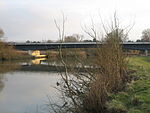Mongewell
Former civil parishes in OxfordshirePopulated places on the River ThamesSouth Oxfordshire DistrictUse British English from August 2015Villages in Oxfordshire

Mongewell (first syllable rhymes with sponge) is a village in the civil parish of Crowmarsh, about 1 mile (1.6 km) south of Wallingford in Oxfordshire. Mongewell is on the east bank of the Thames, linked with the west bank at Winterbrook by Winterbrook Bridge. The earthwork Grim's Ditch, now part of The Ridgeway long-distance footpath, passes through the northern part of it and is a scheduled ancient monument.
Excerpt from the Wikipedia article Mongewell (License: CC BY-SA 3.0, Authors, Images).Mongewell
Constitution Hill, South Oxfordshire Crowmarsh
Geographical coordinates (GPS) Address Nearby Places Show on map
Geographical coordinates (GPS)
| Latitude | Longitude |
|---|---|
| N 51.586 ° | E -1.119 ° |
Address
Constitution Hill
Constitution Hill
OX10 8BS South Oxfordshire, Crowmarsh
England, United Kingdom
Open on Google Maps







